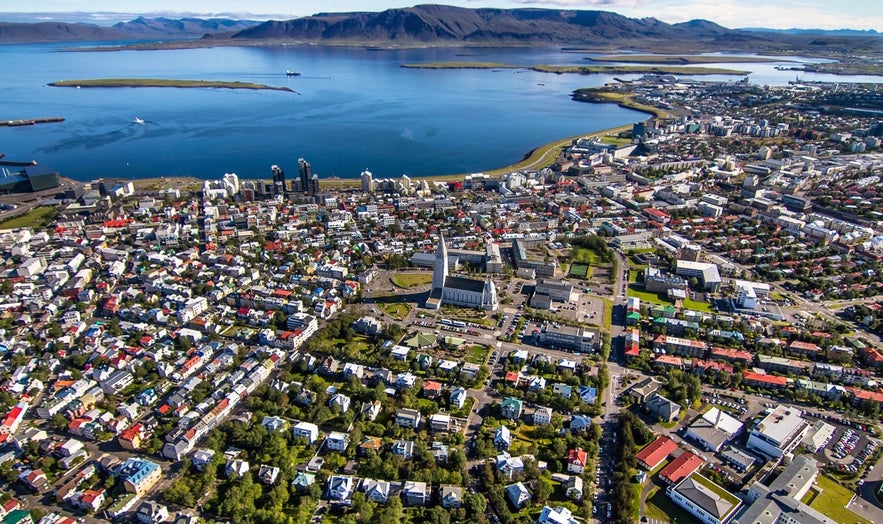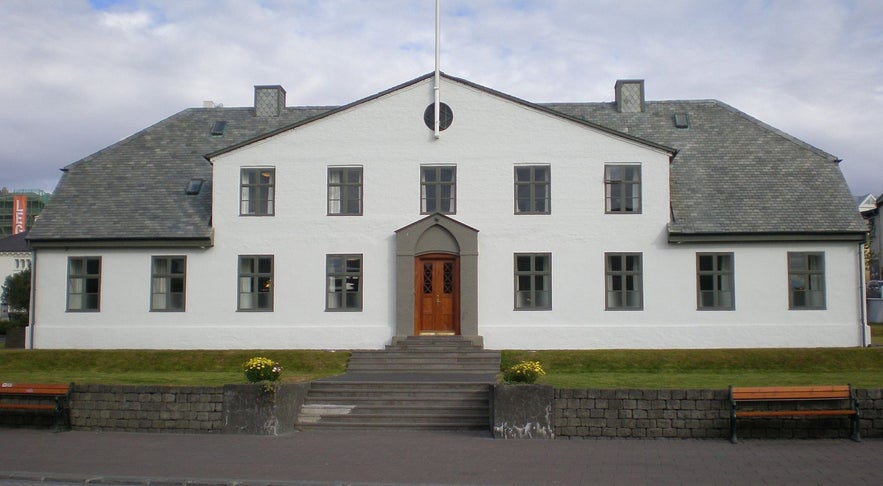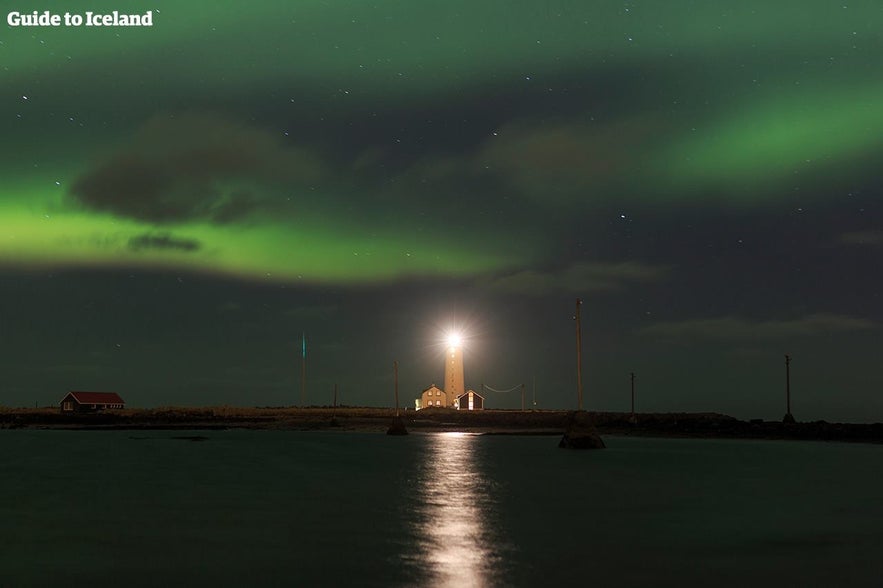
Hvad er Reykjaviks mest ikoniske seværdigheder? Hvor finder man det bedste af byens kunst, historie og kultur? Læs videre for alt hvad du behøver at vide om seværdighederne i og omkring Islands pulserende hovedstad.
Island er kendt verden over, især for sin natur: nordlyset, mægtige gletsjere, utrolige vandfald, smukt højland og selvfølgelig eksplosive vulkaner. Når de fleste besøger landet, tænker de derfor sjældent over, hvad de skal lave i Reykjavik.
Derfor kan du stole på vores indhold
Guide to Iceland er den mest pålidelige rejseplatform i Island, der hjælper millioner af besøgende hvert år. Alt vores indhold er skrevet og gennemgået af lokale eksperter, der kender Island ud og ind. Du kan stole på, at vi giver dig præcise, opdaterede og pålidelige rejsetips.
Hovedstaden er dog fuld af overraskelser og egne attraktioner, der tiltaler folk med vidt forskellige interesser. Vi anbefaler at booke en guidet byvandring i Reykjavik med en ekspert, så du får lokale indsigter i denne charmerende by.
Historieinteresserede vil blive imponeret over byens gamle bygninger og vikingetidens og middelalderens levn. De kulturelt interesserede vil sætte pris på steder som Harpa Koncertsal og Konferencecenter og Hallgrimskirkja.
Kunstelskere vil finde et væld af imponerende statuer, skulpturer og gadekunst overalt i Reykjavik. Naturentusiaster vil opdage at de kan opleve masser af spektakulære landskaber uden at forlade byen.
Det er ikke kun destinationerne på en sightseeingtur, der gør det så fornøjeligt at bruge en dag eller mere på at udforske Reykjavik. Byen har en vidunderlig charme, der udspringer af dens mange kontraster.
Gamle huse med farverige bliktage omkranser nye bygninger, der emmer af modernitet og sofistikation. Smalle, bakkede gader med tætliggende huse brydes op af store grønne områder, og stille steder, hvor man kan fordybe sig i ro, ligger i gåafstand fra det livlige centrum.

Hovedstaden føles både som et tæt sammentømret fællesskab og en fremadskuende by. Udover sine seværdigheder og naturlige charme byder den besøgende velkommen med et væld af gallerier, museer, butikker og barer samt konstante liveevents og festivaler. Reykjavik fortsætter med at stige i graderne som en af verdens førende kulturhovedstæder.
- Læs også: Reykjaviks historie
Sådan oplever du Reykjavik
Der er mange måder at opleve Reykjaviks seværdigheder på, og mulighederne vokser i takt med det stigende antal besøgende. Island havde over to millioner udenlandske overnattende gæster i 2024, og 2025 forventes at sætte ny rekord.
 Guidede byvandringer afholdes året rundt og tager dig med til udvalgte ikoniske steder. Mange af disse er gratis, men du kan også betale for en privat tur og kombinere den med kulturelle aktiviteter såsom ølsmagning.
Guidede byvandringer afholdes året rundt og tager dig med til udvalgte ikoniske steder. Mange af disse er gratis, men du kan også betale for en privat tur og kombinere den med kulturelle aktiviteter såsom ølsmagning.
Der kører hop-on, hop-off-busser, som du kan bruge til at nå flere destinationer over længere tid.
Hvis disse muligheder ikke er vovede nok, findes der forskellige flyveture, der giver dig et fascinerende perspektiv på byens mest ikoniske bygninger og omkringliggende landskaber.
Disse spændende ture kan tages med helikopter eller fly og er både bekvemme og spændende, da de afgår fra Reykjaviks indenrigslufthavn året rundt, når vejret tillader det.

Historiske seværdigheder i Reykjavik
Ifølge Landnámabogen har Reykjavik været beboet siden år 874. Byen har derfor en fascinerende fortid, der præger mange af dens mest populære steder. Her finder du huset, hvor kimen til afslutningen på Den Kolde Krig blev lagt, ét af verdens ældste parlamenter og vikingefund fra 900-tallet. Reykjavik har et væld af steder, der vil fascinere enhver med interesse for historie.
Hofdi-huset

Hofdi-huset er et af de mest internationalt betydningsfulde historiske steder i Island. Oprindeligt var det landets franske konsulat, men i 1986 fik det en langt større rolle, end dets ydmyge udseende antyder. Det var her, Reykjavik-topmødet blev afholdt, hvor præsident Reagan og generalsekretær Gorbatjov mødtes for at diskutere et internationalt forbud mod ballistiske missiler under Den Kolde Krig.
Selvom forhandlingerne brød sammen, viste de begge parter, hvilke indrømmelser den anden var villig til at give, og derfor var topmødet i Hofdi-huset afgørende for vedtagelsen af INF-traktaten i 1987. Mange betragter også deres møde som begyndelsen på afslutningen af Den Kolde Krig.
Altinget og domkirken
Foto fra Wikimedia, Creative Commons, af Zinneke. Ingen ændringer foretaget.
I centrum finder du det islandske parlament, Altinget, og Reykjaviks domkirke side om side. Parlamentet blev flyttet hertil i 1849, hvilket centraliserede magten i Reykjavik efter at have ligget i Thingvellir Nationalpark i over syv århundreder.
I dag nævnes Altinget ofte som et af verdens ældste fungerende parlamenter.
Foto fra Wikimedia, Creative Commons, af JuTa. Ingen ændringer foretaget.
Reykjaviks domkirke overses ofte, da mange tror at rollen tilhører Hallgrimskirkja, som dominerer byens skyline. Denne charmerende bygning er dog Reykjaviks ældste kirke og blev oprindeligt indviet i 1796. Dens enkle lutherske stil fortæller en historie om Islands religiøse udvikling.
Statsministerens kontor og Menntaskólinn í Reykjavík

Foto fra Wikimedia, Creative Commons, af Guðmundur D. Haraldsson. Ingen ændringer foretaget.
Stjórnarráðshúsið på Lækjartorg lige ved centrum er statsministerens officielle kontor og har været brugt som sådan siden 1904. Det ligger meget centralt og uden hegn eller synlig sikkerhed, hvilket siger meget om Islands trygge og rolige atmosfære – eller, når det er dækket af toiletpapir og graffiti, at folket ikke er tilfredse med den siddende regering.

Foto fra Wikimedia, Creative Commons, af Herbert G. Ingen ændringer foretaget.
Kontoret ligger på samme gade som Islands ældste uddannelsesinstitution, Menntaskólinn í Reykjavík. Skolen blev grundlagt i 1056 i bispesædet Skalholt, flyttede til Reykjavik i 1786 og har ligget på sin nuværende adresse siden 1846.
Langhus-ruinerne
Selvom denne liste ikke indeholder museer som seværdigheder, må Reykjaviks Bosættelsesudstilling være en undtagelse, da den er et must for historieinteresserede. Her kan du se arkæologiske levn fra den ældste bosættelse fundet i Reykjavik-området, hvor nogle genstande stammer helt tilbage fra 800-tallet.
Der er også en velbevaret sal og vægfragment fra et langhus fra 900-tallet. Entré for voksne er i øjeblikket 2.900 ISK (21 USD), gratis for børn under 18, og der er normalt åbent dagligt fra 10.00-17.00. Dit besøg forbindes også underjordisk med den nyere byhistoriske udstilling på Adalstræti 10. Udstillingen ligger på Adalstræti, Reykjaviks ældste gade, hvor bygningerne går tilbage til midten af 1700-tallet.
- Læs mere her om de bedste museer i Reykjavik
Laugavegur
Laugavegur er Reykjaviks hovedstrøg, kendt for sine butikker, restauranter og barer, og en af byens ældste gader. Navnet betyder "Vaskevejen", da den førte til de varme kilder i Laugardalur, hvor folk tidligere vaskede tøj.
Vejen blev anlagt i 1885 og har stadig flere historiske steder, såsom en af Reykjaviks ældste caféer, Prikið (grundlagt 1951). De seneste år har flere gågader forbundet Laugavegur og Austurstræti, hvilket har skabt lange bilfri strækninger, der især om sommeren er meget livlige.
- Læs også de ni mest berømte islændinge gennem historien
- Læs vores anmeldelse af Prikið i Reykjavik
Kulturelle seværdigheder i Reykjavik
I det 20. og 21. århundrede eksploderede Reykjaviks kulturliv. Før Anden Verdenskrig var byen ret fattig på bemærkelsesværdige steder, hvad enten det var smukke bygninger eller steder, hvor folk kunne nyde kunst og samvær. Med udviklingen efter krigen og det senere fokus på turisme udviklede Reykjavik sig dog utroligt hurtigt, så den i 2000 blev udnævnt til én af ni europæiske Kulturhovedstæder.
Hallgrimskirkja
 Hallgrimskirkja er sandsynligvis Reykjaviks mest ikoniske bygning. Med sine 75 meter er den én af landets højeste bygninger, og dens placering på toppen af en bakke gør den endnu mere imponerende. Denne lutherske kirke blev indviet i 1986 efter 41 års byggeri og er opkaldt efter den islandske digter og præst fra 1600-tallet, Hallgrímur Pétursson.
Hallgrimskirkja er sandsynligvis Reykjaviks mest ikoniske bygning. Med sine 75 meter er den én af landets højeste bygninger, og dens placering på toppen af en bakke gør den endnu mere imponerende. Denne lutherske kirke blev indviet i 1986 efter 41 års byggeri og er opkaldt efter den islandske digter og præst fra 1600-tallet, Hallgrímur Pétursson.
Kirkens skønhed skyldes især dens inspiration fra det islandske landskab. Dens tre hovedinspirationer er den protestantiske enkelhed, de sekskantede basaltsøjler, der findes overalt i landet – især ved Svartifoss-vandfaldet – og formen på hammeren fra Thor, den gamle nordiske tordengud.

Kirken kan besøges gratis. Dens store sal, enorme orgel og smagfulde kunst gør den til et smukt sted. Tårnet kan også bestiges, så du kan få panoramaudsigt over byen.
Aktuelle billetpriser: voksne 1.400 ISK (10 USD); børn 7-16 år: 200 ISK (1,5 USD) samt rabat for pensionister, studerende og personer med handicap. Åbningstiderne varierer efter sæson, og tårnet er lukket under gudstjenester.
Harpa Koncertsal og Konferencecenter

Indenfor er akustikken i verdensklasse, og stedet huser Islands Symfoniorkester samt et helårsprogram med alt fra klassiske koncerter til comedy.
Årlige højdepunkter inkluderer Iceland Airwaves-festivalen i begyndelsen af november, den moderne musikfestival Dark Music Days i januar og Reykjavik Jazz Festival hver august.
Islands Nationalteater

Islands Nationalteater åbnede i 1950 og er kendt for sin usædvanlige arkitektur og fantastiske forestillinger. De fleste forestillinger er på islandsk, men stedet byder også på shows på engelsk, både klassiske og nye, samt dukketeater og forestillinger for børn. Mange af de forestillinger, der havde premiere her, har vundet nationale og internationale priser og er kommet på verdensturné.
Kunstoplevelser i Reykjavik
Mange af de mest bemærkelsesværdige seværdigheder i Reykjavik er de kunstværker, der er udstillet i det offentlige rum. Fra historiske statuer til vægmalerier, der dækker bygningernes facader, er Reykjavik en by præget af kunstnerisk håndværk, der hylder befolkningens evner og flid. Dem, der har øje for talent, vil blive betaget af de værker, der kan opleves på følgende steder i hovedstaden.
Solfarid (Sun Voyager)

Solfarid startede som et design indsendt til en konkurrence i 1986 om et kunstværk til at fejre Reykjaviks 200-års jubilæum. Den blev afsløret på byens fødselsdag, den 18. august 1990. Desværre nåede Gunnar ikke at opleve den store afsløring, men det aftryk og budskab, han efterlod med denne skulptur, betyder, at han aldrig bliver glemt.
Einar Jónssons skulpturhave
Einar Jónsson var en af Islands mest talentfulde og banebrydende kunstnere. Født i 1874 tilbragte han tyve år i udlandet for at lære skulptur – en kunstart, der dengang var næsten ukendt i Island. Kritisk over for at kopiere andre og passioneret omkring at skabe sin egen vej, gjorde han sig så bemærket internationalt, at Altinget inviterede ham hjem for at arbejde for nationen og gav ham atelier og bolig.
Indtil 1954 skabte han utrolige værker, oftest i gips, som kunne tage op til et årti at færdiggøre. De fleste af hans værker findes nu på Einar Jónsson-museet og skulpturhaven lige ved siden af Hallgrimskirkja. Haven er gratis at besøge, og en gåtur her vil fascinere enhver med interesse for kunstnerisk håndværk.
Einar Jónsson-museet ligger på stedet; entré for voksne er 1.500 ISK (11 USD), gratis for børn under 18.
Andre skulpturer
Siden Einar Jónsson er skulptur blevet langt mere udbredt i Island. Alligevel har han skabt nogle af de mest markante værker, der pryder byen. Han har for eksempel lavet statuerne foran statsministerens kontor – af den danske konge Christian IX, der overrækker islændingene deres første forfatning, og af Hannes Hafstein, den første minister efter hjemmestyret. Han har også lavet statuen af Reykjaviks grundlægger, Ingólfur Arnarson, der står på Arnarholl med udsigt over centrum.
Mange andre kunstnere har bidraget til byens skulpturer af berømte historiske personer. Foran Hallgrimskirkja står for eksempel en statue af Leif Eriksson, den første europæer i Amerika, som blev skænket af USA i 1930. Digteren Tómas Guðmundsson sidder på en bænk i centrum, skabt af Halla Gunnarsdóttir.
Der er også værker, der forestiller moderne hverdagsfolk, såsom skulpturerne Søn, Pige og Musikeren af Ólöf Pálsdóttir, samt historiske hverdagsmennesker. Den mest kendte er Vandbæreren af Ásmundur Sveinsson, der hylder de kvinder, der bar vand op og ned ad Laugavegur siden bosættelsen.

Ikke alle skulpturer forestiller dog mennesker. Nogle er abstrakte, såsom Gerður Helgadóttirs snoede værk, der blot kaldes Skulptur. Andre er politiske, såsom Magnús Tómassons-monument for en ukendt bureaukrat. Black Cone, Monument to Civil Disobedience fra 2012 af Santiago Sierra, hylder græsrodsbevægelsers styrke ved at vise en lille metalkegle, der sprænger en stor sten.
Gadekunst i Reykjavik
Et af højdepunkterne ved sightseeing i Reykjavik er den farverige gadekunst, der pryder byen. Inspireret af musik, islandsk folklore og fantasi er mange vægge smukt dekoreret.
Bemærk, at scenen er dynamisk: adskillige værker fra WALL-POETRY-projektet i 2015 findes stadig, mens andre er blevet erstattet, efterhånden som bygninger ændres eller rives ned. Byen kortlægger nu over 160 gadekunstværker og opdaterer kortet løbende.
- Læs også: Graffiti og gadekunst i Reykjavik
Måske den mest kendte og elskede gadekunst har dog prydet det historiske gamle havneområde siden 2013. Den australske kunstner Guido van Helten malede vintage, fotorealistiske motiver på de forfaldne mure og forvandlede et af Reykjaviks mest nedslidte områder til et af de mest fejrede.
- Læs om kunstgallerier i Reykjavik
Naturområder i Reykjavik
Selvom Reykjavik er en hovedstad, er den omgivet af islandsk natur. På klare dage er der mange steder, hvor man kan se ud over de golde, vulkanske landskaber på Reykjanes-halvøen, de snedækkede tinder på Snæfellsnes-halvøen og de dramatiske skygger fra Blafjöll, De blå bjerge. Derudover har byen masser af grønne områder, hvor man kan slippe væk fra centrum.
Grotta-fyrtårnet

Området er især værd at besøge ved solopgang eller -nedgang og på klare vinternætter for at få gode chancer for at se nordlys. Der er et lille geotermisk fodbadebassin kaldet Kvika, hvor du kan varme fødderne, mens du slapper af. Du kan gå over sandtangen til fyret kun ved lavvande, og adgang til naturreservatet er forbudt i ynglesæsonen fra 1. maj til 15. juli, så planlæg dit besøg derefter.
Perlan og Oskjuhlid
Sammen med Hallgrimskirkja og Harpa er Perlan, eller Perlen, en af de mest ikoniske bygninger i Reykjavik. Perlan ligger på toppen af den skovklædte bakke Oskjuhlid og er en kuppelformet bygning, der tidligere havde en roterende restaurant på toppen.
For at få adgang til udsigtsplatformen skal du købe entrébillet til udstillingen Wonders of Iceland, som indeholder på en gåtur gennem en isgrotte, en vulkanoplevelse og nordlysplanetariefilmen Áróra. Panoramaudsigten over skoven, byen, kysten og de omkringliggende bjerge gør det hele turen værd.
Skoven Oskjuhlid er det perfekte sted i Reykjavik, hvis du vil væk fra byens larm. De tætte træer skærmer for bylivet, og der er mange hyggelige vandrestier, der snor sig gennem området.
Nogle af stierne fører til gamle befæstninger fra Anden Verdenskrig, som heldigvis aldrig blev taget i brug. Andre leder til et asetempel for de gamle nordiske guders religion. Lige nedenfor skoven ligger den menneskeskabte strand Nautholsvik, som er geotermisk opvarmet enkelte steder om sommeren og tilbyder omklædningsfaciliteter, udespa og dampbad med sæsonåbningstider.
Laugardalur-parken
Foto fra Wikimedia, Creative Commons, af Helgi Haldórsson. Ingen redigeringer foretaget.
Laugardalur-parken er et stort grønt område i byen med mange attraktioner, der tiltrækker besøgende i Reykjavik. Her finder du en botanisk have med et bredt udvalg af arktiske blomster og planter, som er åben hele året, men bedst besøges om sommeren, når den står i fuldt flor. Familieparken og Zoo har åbent året rundt og byder på en række islandske dyr, herunder polarræve og rensdyr.
Parken huser også Laugardalslaug, som er Reykjaviks største svømmebad med rutsjebaner, varme bassiner, saunaer, dampbade og store svømmeområder. Et besøg i Laugardalur giver dig mulighed for at opleve Islands flora og fauna samt nyde den geotermiske aktivitet – alt sammen uden at forlade byen.
Videy-øen
 Den sidste seværdighed på denne liste kræver en bådtur, men er en skøn oplevelse for dem, der søger naturlig ro samt lidt historie og kultur. Der sejler både til Videy, som er en ø lige ud for Reykjaviks kyst, dagligt om sommeren og i weekenderne om vinteren. Returbilletter kan købes fra Skarfabakki året rundt, med ekstra afgange fra den gamle havn i højsommeren.
Den sidste seværdighed på denne liste kræver en bådtur, men er en skøn oplevelse for dem, der søger naturlig ro samt lidt historie og kultur. Der sejler både til Videy, som er en ø lige ud for Reykjaviks kyst, dagligt om sommeren og i weekenderne om vinteren. Returbilletter kan købes fra Skarfabakki året rundt, med ekstra afgange fra den gamle havn i højsommeren.
Øen er nu ubeboet, men der er stadig masser at opleve for besøgende. Ruiner fra den tid, hvor øen var beboet, ligger spredt, og du kan frit gå rundt blandt dem, mens de bygninger, der stadig står, har en betydningsfuld historie. Kirken på øen er en af de ældste stenkirker i landet, og Videy-huset fra 1755 er Islands ældste stenbolig.
Videy huser også to betydningsfulde kunstprojekter. Richard Serras Milestone-projekt har stået her siden 1990. Mere nyligt, og mere berømt, blev øen hjemsted for Yoko Onos Imagine Peace-tårnet, som sender en lysstråle op i nattehimlen på bestemte tidspunkter af året.
 Reykjavik er blevet en levende, moderne og unik by. Med en rigdom af historie, kultur, kunst og natur har byen noget for enhver smag. Efterhånden som flere og flere besøger byen, fortsætter den med at udvikle sig, vokse og blomstre.
Reykjavik er blevet en levende, moderne og unik by. Med en rigdom af historie, kultur, kunst og natur har byen noget for enhver smag. Efterhånden som flere og flere besøger byen, fortsætter den med at udvikle sig, vokse og blomstre.
- Læs også: De 10 bedste ting at lave i Reykjavik



















